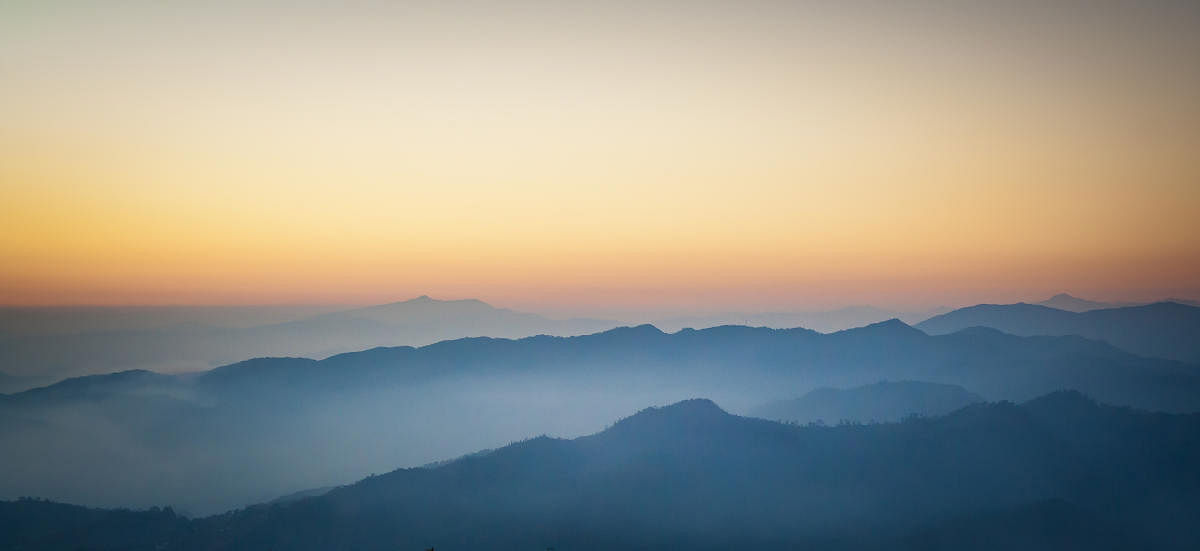Birds that changed men


Pratap Rai, who’s looking for birds with me this morning in Latpanchar, would agree that cameras changed his life. And they just didn’t change him, but the whole of Latpanchar.
Latpanchar is a hamlet in an obscure wildlife sanctuary — Mahananda Wildlife Sanctuary — up north, in Darjeeling, West Bengal. Being in the Eastern Himalaya with significant altitudinal variation, it’s blessed with a variety of birdlife.
But the village itself was just another clutch of families clinging to a life on the slopes of these hillsides that lie at the feet of distant snow peaks.
From the valley or a faraway ridgeline, the colour and nightlights of these settlements look alluring, but the lives of the people here aren’t flattering, and the birds got scant attention.
And the little attention they got was of the wrong kind.
Like everyone around him, Pratap thought birds were only destined for the pot. Sneaking around with a catapult at dusk, he would expertly shoot down pheasants roosting in the trees. Whole trees would be cut down so that the barbet nests with chicks in them could be roasted and eaten. Common birds like red-vented bulbuls and spotted doves had gone locally extinct; only the inedible ones fared better.
Yet, outsiders would keep turning up, from faraway cities, mostly from Kolkata, but sometimes from places as far as Mumbai. They would tramp around the village, looking for birds, carrying binoculars and cameras. Pratap remembers one winter morning, when a man walked up to him as he sat on the roadside sunning himself, and asked him if he could show the way to the fruiting trees that were known to be well-known haunts of a particular bird.
That big bird, the man had said — flapping his arms at full stretch to mimic a large wingspan and carving down a funnel of air in front of his face with his hands to indicate the casque — can you show me that bird, the hornbill?
Pratap hadn’t ever known the name of the bird, but understood what the man meant.
That bird, the rufous-necked hornbill, remains a highlight for every nature photographer. Seeing it is trance-like: large and slow, but infinitely graceful in flight, with a nape and casque reminiscent of a reptilian pre-history. Its range is now restricted with only two disjunct populations — one in northern Laos, Thailand, Vietnam and Myanmar and the second in Northeast India and Bhutan, clipped at Mahananda in West Bengal.
Pratap went with the man, and after an hour’s wait, a pair of hornbills glided into the trees. The man had a big camera, and just before he parted ways with a hundred-rupee note as a token of appreciation, he showed Pratap the photographs.
The birds are back in Latpanchar, and for now, it’s up to all of us, and a little bit of luck, to keep it that way.
Pratap marvelled at the plumage of the bird he’d seen from afar all his life. A few weeks later, a tour guide heading a group of birding enthusiasts from Europe would seek his help to spot the hornbill again, and this time Pratap got left a pair of used binoculars and a well-thumbed bird guide.
Fate had conspired. Pratap had always been sharp, good at chess, quick to pick up basic arithmetic in the little schooling he’d had. The bird guide was memorised soon, and he was on his way.
Showing the way
Other villagers have similar stories. Many felt ashamed, when tourists, seeing them roaming around with catapults, offered them money not to kill birds. A taxi operator hooked up an arrangement to ply tourists back and forth from Siliguri, the nearest railhead. A few cottages got spruced up as homestays started up hesitantly. And the village soon realised that a bird in the bush was worth quite a lot more than in the pot, and that the tourists would keep coming as long as the birds, and the trees, were around.
Today, hunting in Latpanchar has long stopped. In a village with 166 households, the 10 homestays and 12 birding guides do good business for most of the season. Not everyone has profited equally, but the tourist flow is steady, and the benefits will percolate more evenly with time.
Of course, sometimes there’s one tourist too many, especially during the breeding season, when a crowd can descend here, all eager to get that one great shot for social media. This isn’t good for the sensitive birds like hornbills, which breed slowly, and so there’s real danger of killing this goose that’s laying the golden eggs. There’s talk now of sensitising tourists, following ethical birding guidelines, setting up hides, and attracting other birds to backyard of the cottages themselves, by planting fruit trees.
The delicate balance of sustainable tourism, always ever-elusive, is being worked out in this land, without any official scheme or intention. Like the stopping of the hunting, and the coming back of all the myriad bird species, this is a fragile and quiet miracle, ignited by the magic that a single photo can bring.
Women, drying their hair in the sun, ask, “Dhanesh bhaeteyo?” (Did you see the hornbill?), as we get back from our walk.
Yes, we did, we say.
The birds are back in Latpanchar, and for now, it’s up to all of us, and a little bit of luck, to keep it that way.